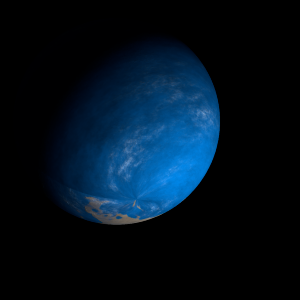|
|
Space Astro
|
Info for exoplanet "Dyangg-yiwei"
| Scientific (actual) data |
|---|
| Name | K2-195 c |
| Planet status | Confirmed |
| Radius | 0.23 |
| Orbital period | 28.4828 |
| Inclination | 88.537 |
| Discovered | 2018 |
| Updated | 2021-02-05 |
| Tconj | 2457240 |
| Publication | Published in a refereed paper |
| Detection type | Primary Transit |
| Alternate names | 2MASS J13191957-0830339 c, EPIC 212689874 c, EPIC 212689874.02, WISE J131919.56-083034.2 c |
| Star name | K2-195 |
| Right ascension | 199.83° |
| Declination | -8.51° |
| Mag j | 11.248 |
| Mag h | 10.904 |
| Star distance | 317.83 |
| Star metallicity | -0.1 |
| Star mass | 0.94 |
| Star radius | 0.99 |
| Star temperature | 5713 |
| Star alternate names | 2MASS J13191957-0830339, EPIC 212689874, WISE J131919.56-083034.2 |
| Wikipedia article | K2-195 c |
Back
| |
| Fictional info (?) |
|---|
| Suggested name | Dyangg-yiwei |
| Planet type | Cold planet |
| Its north and south poles, therefore, lie where most other planets have their equators. |
| Atmosphere | Hydrogen deuteride (HD) | 45% |
| Ammonia | 42% |
| 2H2O | 11% |
| Argon | 1.5% |
| Atmospheric pressure | 80 bar |
 |
| No known satellites |
| Google search for Dyangg-yiwei |
|
Website by Joachim Michaelis
|
|
|
|